The fantasy of Warcraft battlegrounds is that there are two relatively equal sides to the conflict. This isn’t just a fantasy that is pushed thematically, through lore and storytelling. This is an idea that is promulgated through the structure of random battlegrounds themselves, through the random queue mechanism that promises a similar experience to all players, no matter what faction their characters are.
However, this fantasy is false. It’s not false because of story or lore, but rather because of the interplay between three factors: 1) experience and gear providing advantages in PvP, 2) the random matchmaking mechanic itself, and 3) the separation of the pool of players into two teams.
Under the current system, faction imbalance in random battlegrounds is inevitable and leads to negative player experiences on both sides.
Let’s look at why.
THE IDEAL SYSTEM
The core idea of random matchmaking for games is: given a large enough pool of players and a large enough number of games, any given match will be equal. You should have approximately the same ratio of inexperienced to experienced players on each team, an equal distribution of gear. The goal is to allow individual performance to dictate the outcome.
In an ideal world, it looks like this:
The above picture represents the overall pool of players for random matches.
The first factor that we have to account for is that gear (on a character) and experience (of a player) both influence the success of a game. Gear is a fundamental aspect of World of Warcraft that affects a character’s ability, and in PvP it is acquired through experience. I’ve represented the combination of player experience and character gear through the relative size of the dots above – the larger the dot, the more influence that player can exert through a combination of experience and gear.
The random battleground mechanic is the next component to consider. At any given time, a group will be drawn from these pools of potential players.
When the system is at equilibrium, the queue times on both sides will be the same and the total area of all dots selected will be equal. Some flux is expected due to random selection of players, but over time the result should be solid queues and a 50/50 split in wins.
At this point we have the ideal state of random matchmaking.
Now let’s introduce faction into the population.
Now there are two pools. There’s limited fluidity between the pool – a player can choose to take their dot and go to the other side, either by rerolling (with a smaller dot) or faction changing (with the same size dot) – but that’s limited by the barriers of time (leveling) or money (faction change fees). So we’ll assume resistance to change within the pools unless there’s a reason to change.
Ideally, faction shouldn’t matter. But by splitting the source population in two, it creates a situation where not only is equilibrium impossible to achieve, it becomes something players rationally choose to avoid, creating bad experiences on both teams.
INTRODUCING IMBALANCE TO THE SYSTEM
The key to making the above system work is that the two pools that feed the teams in matches need to be equal. Any imbalance between the two affects the teams in a match, which in turn introduces a feedback loop into the population pools. Over time, small imbalances become magnified until the system stops working.
I’m going to assume just two things here.
1) The perception of an imbalance is more influential than the actual imbalance. Players only respond to imbalances that they perceive, through experience or communication with other players.
2) Experienced players are more likely to respond to imbalances than novice players. New players have not yet been exposed to the imbalance, and the chance that a player will respond to an imbalance increases over time.
Let’s start off with a simple case: the perception that one faction is better at PvP.
CASE 1: THEY’RE THE BETTER TEAM
It doesn’t matter how this idea originates. This could be through an early legitimate imbalance in a smaller population. It could be through a bad sample. It could be through some vocal members of the community repeating it. It doesn’t matter if the seed is real or not – all that matters is that players believe it.
If one faction is perceived to be better than the other, we should observe a slight shift of experienced players to that side.
Once this happens, a feedback loop starts with the matchmaking algorithm.
What might have started as a rumor now has evidence behind it, as the matches skew slightly in one team’s favor. As players grow in experience, they slowly react to this imbalance rationally.
The players on the losing team evaluate their performance over time and consider that maybe the other faction is better. Their experience is that they lose more than normal, that the other team just does a better job. The pressure to investigate the other side increases.
The players on the winning team feel far less pressure to change sides. Matches become progressively easier as more and more big dots join their pool. Why stop when you’re winning?
Queue times are also affected in this scenario. One side will have a larger pool of interested players than the other, resulting in long wait times for the perceived ‘better’ faction, and nearly instant queues for the ‘weaker’ faction. This amplifies the feedback loop and introduces the negative experience to the stronger faction.
Long wait times but higher chance to win, or fast queues for a probable defeat? Those are the choices you have when one faction is perceived to be better than the other.
CASE 2: THE STREAMS THAT FEED THE POOL
Let’s go back to our original state of equilibrium and look at a different variable – new players.
Player population is never static over time – people pick up and put down Warcraft all the time. A certain amount of churn – loss of experienced players – is expected within the pools as players either stop participating in PvP or stop playing Warcraft entirely. Churn is offset by new players joining the pool, either new subscribers or experienced players who are trying PvP for the first time.
So here’s another assumption: dots of all sizes can drop out of the pool, but only small dots join the pool.
Because of the gear structure and scaling present in instanced PvP, no player can start out as a really big dot. They might be a great player with experience in the class, but even with the best heroic raid gear the character will be undergeared for PvP. Best case: an experienced player with great PvE gear tries PVP and enters as a medium dot. That’s pretty rare, so we’ll assume only small dots enter the pool.
In a state of equilibrium each faction will have equivalent churn and growth rates, resulting in equal-sized pools. If one side churns or grows faster, imbalance will be introduced.
Let’s say that one side is slightly more popular than the other. Not popular in PvP, but overall more popular with the entire player base.
Over time, one pool will get bigger than the other – but not necessarily any better. The ratio of small dots to big dots is maintained over time as players improve and gear up. As long as the flow is consistent, equilibrium is not disturbed by overall faction imbalance. That’s great!
But what about when you have events which disrupt that flow?
The more popular side finds itself at a temporary disadvantage. More small dots entered their pool than the the other side, yet there hasn’t been any time for them to mature into big dots. The numerator of big dots hasn’t changed, while the denominator of little dots has gotten bigger.
Ironically, an influx of undergeared toons affects the more popular faction more adversely than the unpopular faction. Team quality declines on the popular faction, causing more losses. More losses means more churn as new and old players alike get frustrated.
Conversely, the unpopular faction weathers the influx better and their small dots grow and mature in a victorious environment. The popular side has a double whammy of initial frustration with their teammates followed by better-geared opponents.
And that brings us back to Case 1’s feedback loop.
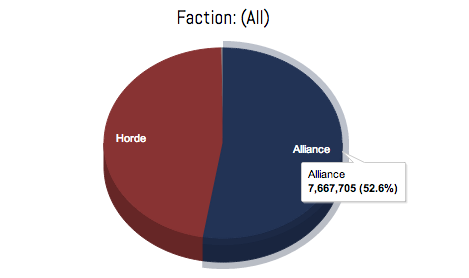 I’ll just leave this here with a note that undergeared, inexperienced boosted level 90s are about the smallest dots you can represent on these graphs.
I’ll just leave this here with a note that undergeared, inexperienced boosted level 90s are about the smallest dots you can represent on these graphs.
CASE 3: BETTER GEAR
World of Warcraft is a game of gear acquisition. Even with the experiments with uniform gear scaling in Mists of Pandaria (Challenge Modes, Proving Grounds), there’s no indication that random PvP will move to an entirely uniform set of gear across players.
So what happens when one side has an advantage in gear acquisition?
PvP gear is generally acquired through three methods: crafting, honor points, and conquest points. Everyone has access to crafted gear, honor gear is available through both random and non-random BGs, and conquest is available from random BGs and rated PvP play.
There’s no immediate faction advantage with the above gearing strategy, especially not from a state of equilibrium. If everyone starts off equal, with the same access to gearing opportunities, there won’t be a problem. But as soon as a problem is introduced, the gear system throws another wrench into the works.
The key is the rewards for winning a random battleground.
Over time, the faction which dominates the random BG queue will acquire more Honor and Conquest than the side which does not. Rated play is essentially factionless, as is crafting – so those two methods are effectively a wash. But control of the random BG reward allows that subset of players who don’t do much rated play to gear up faster than their opponents.
In the dot model I’m working with here, the really big dots get big at the same rate no matter what, but the small and medium dots grow into bigger dots at a faster rate, causing a feedback loop independent of faction changes.
In the North American servers, we see an additional layer of complexity to this problem. Alliance PvPers dominate only the two largest BGs – AV and IoC. Horde dominates the random queues. Alliance PvPers therefore queue specifically for those two BGs (and ONLY those two) so they can gain some honor with a victory, and those BGs reward a lot of honor anyways. The Horde is able to queue for random BGs specifically excluding those two maps, therefore ensuring both that they’ll both gain better gear faster and that the Alliance will continue to dominate those maps. The only reason to venture into AV or IoC as NA Horde is for achievements.
My understanding is that the situation is reversed in the EU, but ultimately it doesn’t matter which side is on top. Both sides suffer because of the feedback loops introduced by gearing strategies.
I should note that the current PvP gear system at endgame is an improvement over previous seasons and twink brackets, when individual items could enter imperfectly into a faction and tip the balance quickly. The level 85 twink bracket experienced an influx of 3 Lute of the Sun-Kings from the BMAH in 5.2, causing a dramatic increase in the relative power of the side which possessed them. This, in turn, caused the opposing team’s twinks to abandon the bracket, which destroyed the competitiveness of the bracket.
I mention the fate of that bracket only as a cautionary tale.
SOLVING THE PROBLEM
There are a few different ways to address the imbalances caused by faction in random BG matchmaking. Some work better than others.
1) Remove gear as a factor entirely. This leaves experience as the only determining factor between teams. It reduces the impact of new players joining, but doesn’t address the perceived imbalance between factions, which is the more pernicious long-term problem. Also it runs completely counter to the core idea of Warcraft.
Since this is offered as a solution a lot, I think it’s worth pointing out that while eliminating gear as a factor in PvP would fix some problems (mostly with class balance), it won’t address faction imbalance. Players will still gravitate to the perceived better faction.
2) Remove the bonus for random battleground wins. This has several drawbacks, most notably that it reduces the overall pool of players for BGs. It also only stops the gearing feedback loop (case 3), and doesn’t address anything about cases 1 or 2. Ineffective and possibly counterproductive.
3) Allow players to group cross-faction. I’ve been a strong advocate of this for rated play – let me do Arenas and RBGs with my opposite faction friends, already, no one cares about faction in rated play! – but for unrated random battlegrounds, it’s actually counterproductive to solving faction imbalance! This removes the obstacles for faction switching AND puts you in a premade group within a match, further skewing the results. Experienced players on the weaker side would just jump into groups on the stronger side, resulting in further domination.
(I still think this needs to happen for rated play, but that’s a different discussion.)
4) Eliminate factions entirely from the matchmaking algorithm. The implementation of this could include giving players the appearance of the opposite faction or not, but completely removing faction from random selection solves the problem completely. With no perceived faction advantage, players will no longer migrate. Queues become optimized and extremely fast. Best of all, matches become random again. You can enforce rules like role selection (X number of healers per side) and gear logic because your pool is doubled in size.
This is a massive paradigm shift and runs counter to the idea that Warcraft is a game of factional combat. Adding options like “queue as mercenary” help address this somewhat, but not completely, since the population will still be segregated into non-random sets.
5) Rig the system. Give the weaker side a behind-the-scenes buff to their abilities. Use real-time data to see what a faction’s overall performance has been and calculate buffs to tip the scales back to equal. Perhaps this is dynamic scaling instead of flat scaling – one side might scale up to 510 while the other scales up to 504.
This is hard to implement right. It adds in another level of variability and addresses some of the weaknesses of case 1, all of the issues of cases 2 and 3, but it’s a tremendous amount of effort to get in place and will require maintenance and constant tweaking. The best system is one that self-adjusts, but that requires time and development resources which could be spent on new content.
6) Bribe players on the weaker side. A CTA-style bribe bag (like is offered to tanks and healers to queue for heroics) doesn’t incent good players to queue on the weaker side – and the weaker side already has a surplus of players. Any solution needs to get the good players off of one side and onto the other in a completely random fashion, and bribe bags actively work against that.
My personal opinion is that the correct solution is to get rid of factions entirely from the random matchmaker. Every other solution keeps some type of imbalance which will inevitably cause a feedback loop to skew the balance one way or the other. Eliminating factions brings queue times back down while equalizing opportunity for victory. It solves the major complaints of both sides of the faction divide.
This solution will not be popular with many parts of the playerbase, entirely for thematic reasons. I get that. For the NA region it means Horde players win less often (but have shorter queues) and Alliance players win more (but give up dominance of the PvEvP battlegrounds.)
Making the game more fair isn’t going to make everyone happy – everyone loses something.
But until the mechanics of random battlegrounds change, dramatic faction imbalance is not just a possibility – it’s inevitable.
—-
If you like this kind of analysis and think you could use someone like me on your team, drop me a line. I am a kickass IT professional with an emotional need for thorough analysis, and I’m recently unemployed. My brain is for hire. 🙂



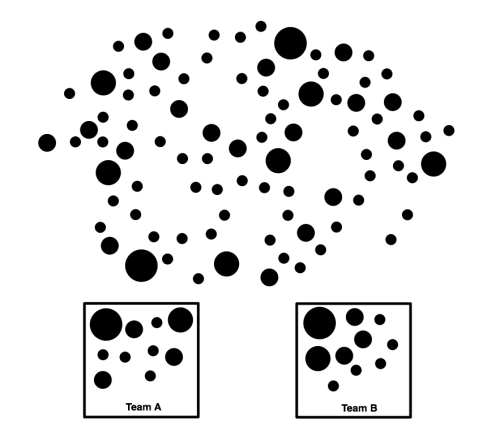
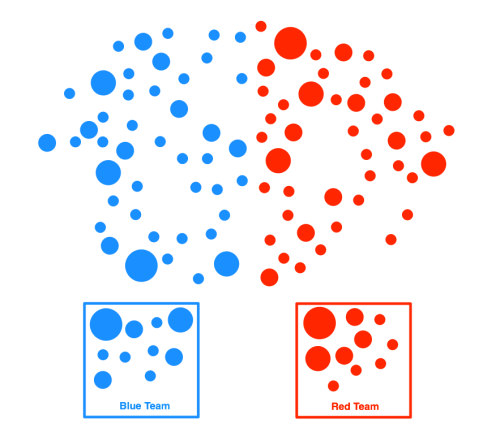
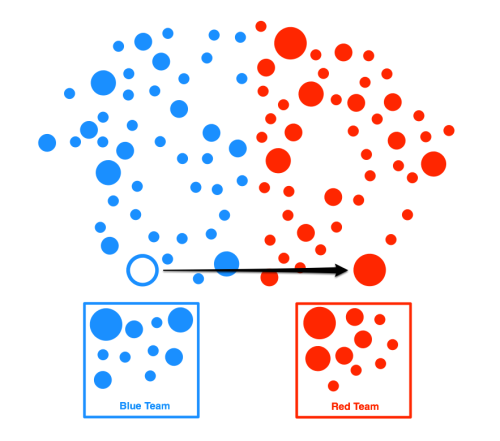
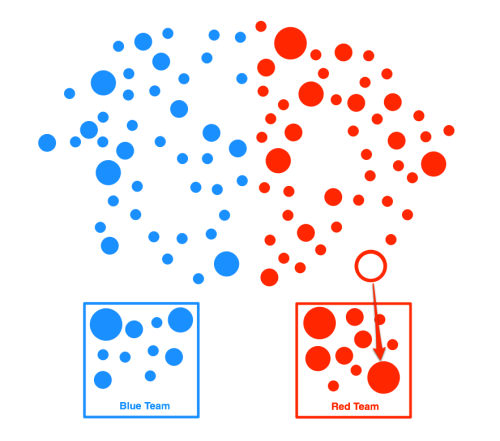
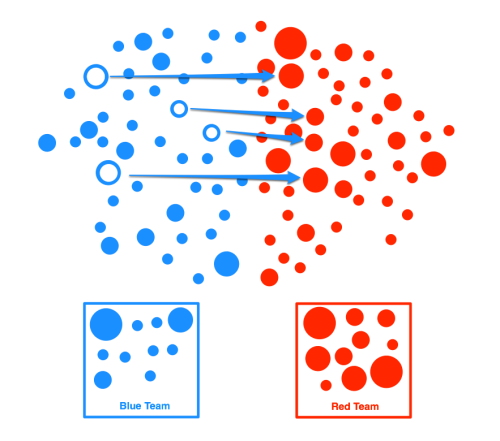
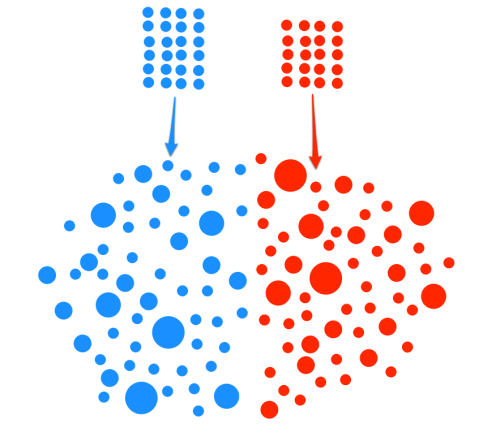

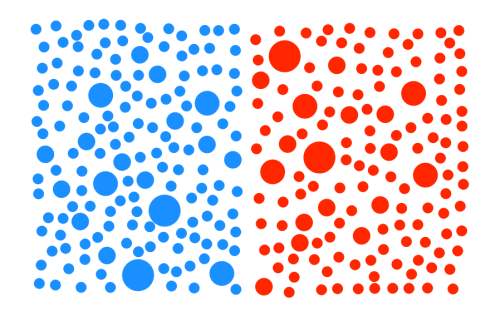
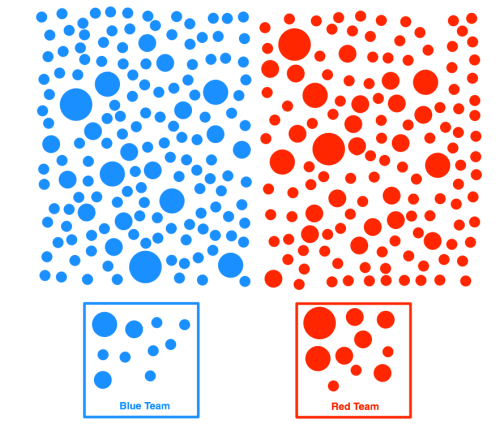
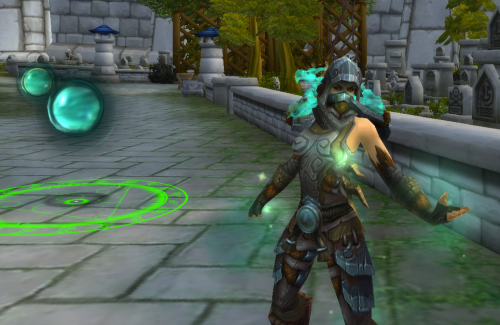
Just want to say, I love your writings. So thorough and informative.
Thanks!
Oh Wise One, answer me these questions three:
1. You note that the AV/IoC problem is “reversed” in the EU. What is the reason for this? It was my understanding that the problem was actually with the maps themselves favoring the Red Team, not with the players.
2. While you did an outstanding job (deliberately) obfuscating the problem by being vague about it, let’s be honest: there’s a widely-held perception that the Horde is simply better at battlegrounds. Is there a reason for this? Is it really racials as some would indicate? Is this something that could be corrected by the incoming revamp of racials?
3. Do you feel that Blizzard bears any responsibility for the perception that the Horde is better? Is the onus perhaps upon them to dispel this myth (reality?)? Every time the subject comes up, the CMs respond with vague statements about how they have data indicating otherwise, but perhaps it’s time for them to lay out said data?
1) I should have been clearer here – my understanding is that the Alliance dominates PvP in the EU, but I have no real way of validating that. The idea that the maps have favored Alliance has been around for a long time and doesn’t seem to match with my experience – it’s that the Horde plays those BGs terribly. When they execute a strategy well they absolutely can win them.
2) I think there are a combination of things here – real and perceived. At the beginning of WoW, the Horde had an exclusive class which was enormously good at PvP that the Alliance didn’t – coupled with the idea that the Horde are the hardcore races, this could have set in motion a legacy of PvP domination that gets reinforced by actual advantages (Horde racials are good for BGs, but there’s a valid argument about EMFH > horde racials > alliance racials). Hopefuly the point was made that it doesn’t matter if the perception is accurate or not – it just has to be believed.
3) The diplomatic answer is: it’s up to the publisher of a game to make their game enjoyable to their playerbase. That might include publishing regular data to counteract sterotypes that can lead to actual imbalances that make their game less fun.
I think my only real sticking point is that there’s no numbers presented, which would easily help prove you right. Not that this means you’re not right or that the numbers you’d need aren’t hard to get, just that I’m sure you’d agree there’s a difference between “based on these numbers, this is what is happening and why” and “based on my anecdotal observations, here is what is happening and why.”
(Also, clearly, the answer is that you should go Horde! hurr hurr)
More seriously, though, have you looked into applying to Blizzard? Maybe you oughtta. http://us.blizzard.com/en-us/company/careers/index.html
You’re right – the numbers are really hard to get, and I don’t trust a lot of the Armory stat pulls I’ve seen for a variety of reasons. But I wanted to make an argument separate from the numbers. As long as these conditions exist over enough time, the imbalance will occur.
I would totally love access to the numbers that would prove this out, however. Theory is nice, proof is better. 🙂
I think getting rid of factions in BG’s is a very good idea. Sure people would complain, but people complain about everything. I don’t think we need to worry about things like how it makes no lore sense. I’m capturing a flag while dying repeatedly. That doesn’t make any lore sense whatsoever anyway.If blizzard are desperate for the lore sense they can treat bg’s like they do the new scenarios and have you be transformed for the correct faction, but I don’t think it’s really worth the effort.
Loved the article, and I think the abstractness of it helped pull it away from being making us emotionally horde or alliance biased while reading it.
Great post, Cyn. I have nothing useful or meaningful to contribute, but I heard that posting something in an article you like helps the author know it is being read.
Faction-less battlegrounds would go a long way toward getting more people interested and involved. Faction based battlegrounds will always cause the type of statistical drift you’ve outlined. Any fixes or boosts put in to alleviate the problem will, in the long run, only reinforce it as long as people are able to choose a particular faction. I would like to see Blizzard publish a faction-less BG just to see how the statistics and popularity play out over the course of an expansion.
Could even make it a bit lore friendly by saying its a training scenario between Aldor and Scryers before sending them to Shadowmoon Valley (or another two factions from future expansion) since both accept players from both factions.
Very good article! It was a very nice read to help speed up my Friday afternoon, so thank you! I have little to add, except that I play Alliance (US) and I purposely blacklist AV and IoC. I rather be given a challenge than a free win. Even while avoiding the two 40 man BGs I win a fair amount of my matches (about 50%, but it can sometimes feel higher) by “carrying” my team to a win. This is just a winning combination for me across the board. I have super fast queue times, I win a fair amount of matches, and the difficult wins give me something to upload to youtube or stream on twitch. The only negative impact this system has had on me is that I’m more reluctant to queue for Random BGs on my Horde character which is also 90 and fully geared for PvP. Still, there are very few times where I feel frustrated by the current system and I wouldn’t mind if Blizzard left it alone. Though, I understand that I’m an anomaly. Cheers!
-Serious
http://www.SeriousPvP.com 🙂
Pingback: Cynwise talks about faction imbalance in random battlegrounds
I believe there’s one more factor that was missed in the pools you investigate, and that’s the role a player selects. I’ve found over the past expac (and dating back into the end of Cata) that Alliance will have fewer healers in the random queues than Horde.* While healers can’t compensate for the lack of DPS from, say, 4 Rogues in WSG, they do give a team a fighting chance. My informal guesstimate is that the Horde teams have more healers than the Alliance teams about 75% of the time in regular old random BGs, and that does have an impact on the game.
Healers not only keep you upright, they keep you upright through your strategic mistakes. That allows a team a greater margin for error when playing a BG, and allows players to learn without losing all the time. You can’t overestimate the positive reinforcement that brings.
If there’s one thing I’d like to see in the next expac, its that there’s another raid sized BG out there. As it is, the Horde can merely queue for randoms and avoid the two losers without any fuss. Throw another Alliance-victory heavy BG into the mix and leave the number of skippable BGs at 2, and that might even things out a bit.
*On the NA servers, at least.
A well written article, but I disagree with your proposal as it essentially disrupts the foundation of the game–conflict between Horde and Alliance.
Here is a better solution: let people live with the consequences of their choices, and allow them to make choices to change their gameplay experience.
If you want fast queue times, play Alliance. If you enjoy the Horde lore and racial appearance, play that faction. If you want to win consistently whether you are Horde or Alliance, find a group of friends instead of queueing solo.
I’ll take your answer in a different direction.
You say “let people live with the consequences of their choices”.
A player who chose to play PvP is now at a disadvantage when fighting a raid (PvE) geared player (out of instance). How exactly does the player who chose PvP play supposed to know that if you play PvE your gear will be better for PvP than PvP gear?
The idea of removing factions from BGs is interesting.
You are right (and the post said so too) that it is against what the game has been about but this does not make it automatically wrong.
The way you phrased your solution is how the game is now, with one side perceived as stronger. Keeping the game unchanged will solve nothing.
Not only that, but if you play on the “strong side”, you will see fewer and fewer players fighting against you since if they go to BG they want to win in order to get Honor points. If you always lose you get nothing. An imbalance is bad for everybody.
I like the get rid of factions idea.
The 2005 “we are two factions at war” (until we both need to kill G) feels outdated to me. IMO, the gameplay of friends being able to be in the same guild, regardless of the faction or alt, in Rift strongly trumps the immersion.
What do you think of SWTOR’s wargames? All the players on a team are the same faction but if needed it will queue two red teams playing each other.
As usual – great post 🙂
A very interesting analysis trying to separate the factors – have not seen anything similar before for this.
From a personal perspective – you have repeatedly used instanced PvP for your analysis while a big part of the problem is in World PvP and the instances that Blizzard insists on calling “raids” (WinterGrasp and Tol Barad).
When raid gear wearing players wipe Conquest gear wearing players there is something VERY wrong.
We have discussed this before and agreed that ganking a lower level player is not what we term PvP – I refer to players of same level.
Blizzard continues to try and fix instanced PvP while totally neglecting the rest of us, that may not even get Conquest gear since we don’t do Arenas and RBGs. We go to some random BGs and those so called “raids” and the rest of the time it’s World PvP (I play on an RP-PvP realm and we frequently schedule World battles to give sides a chance to be of even forces).
I’d love to see an analysis of how World PvP is impacted by faction imbalance, factual or perceived. On the face of it the faction that has smaller population seems logical to be the underdog but then again, some good players go there in order to shine brighter.
Thanks again for the post – loved it.
I have a minor nit to pick.
Multiple times you assert that people will switch factions over a perceived PvP imbalance. I have to ask: really? Are there players out there for which the PvP battlegrounds are THE game? What kind of evidence to we have to support that? How prevalent would those numbers be? Have I managed to avoid those people all my WoW life? I mean, even YOU haven’t changed faction over perceived faction balance issues, so I’m really reluctant to accept that as a thing that happens with much regularity.
Still, I love the presentation here, that really helps visualize the problem quite clearly. As others have stated, wish we had access to numbers to plug in to THAT particular puzzle. Nothing like seeing what happens when you yank on all the levers 🙂
Yes. I see people switch for PvP. I guess I never thought that was an odd thing. You see it a lot in twink brackets, where faction imbalance is more pronounced and affected by small variations in population.
I have played both sides of the fence on different toons for years, but yeah – I’ve been mostly alliance. Alliance and Horde in a blue-dominated 70s bracket, alliance in an relatively equal 85 bracket. I went Horde in 24s for fast queue times but getting steamrolled sucked.
Most of my attachment to my main has been RP based, but now that I’m more in love with my monk than my warlock I’ll happily take her Horde when the job situation turns around.
(“Do people really faction change just to get better PvE gear because no other guild will take them on their faction? Isn’t that kind of weird?” is how I would translate your comment back to PvE.)
I do see your point on that last comment, and i fact I did consider that perspective. And I actually DON’T see that much faction flip in PvE, though I do see server-hopping. (LFR-ish is kinda making that irrelevant at the expense of the guilds themselves (but that’s another show)).
We move in very different circles; most PvPers I encounter personally are either emotionally incapable of that considered an action, or too badass to care about faction imbalance (we have one of those in our guild, he’s scarey in a good way – “Rogue in plate” is how our GM describes him.). Either way, the “professional soldier” kind of PvPer is a rarity in my particular corner of the universe.
You don’t have to faction change a character to switch the faction you PvP on. I wonder how many people boosted a horde character to 90 just to take advantage of the BGs. The move to make achievements account wide reduced one barrier to this.
Not a PvPer, but really solid thoughts. Your solution would detract somewhat from lore, but improve gameplay significantly. Thanks.
“Detract from lore”? We’re still fighting Alterac Valley, and canonically that battle ended a long time ago. Heck, the warlord there is in a damn wheelchair. Lorewise he’s never killing any Alliance again.
You did a perfect job summing up the problem here! So many pvp analysts like to ignore this problem entirely, but its real. To piggyback on Solution 6: Maybe it can be a toggle in your personal queue that makes it possible to face off against a same faction team, but of course you can’t talk to them. Also, mixing faction inside of teams is scary, but if it fixes queue times on Horde and win ratio on Alliance, I would do it.
Would allowing faction vs same faction in BGs (as is the case in RBGs) not help with queue and skill/perception balance issues too?
A lot of people have deep rooted faction pride and while the more rational people will welcome the larger pool, I don’t think Blizzard will venture into removing the Alliance vs Horde feel of BGs anytime soon.
Same faction BGs definitely helps queue times. It slows down gear acquisition for the dominant faction but doesn’t help the weaker one gear up faster, nor does it improve their skill. If anything it makes the dominant faction stronger by removing the one drawback to choosing that side.
Are queue times really that important to some people?
If you’re going to play for an hour, having to spend 40% of that time in queues isn’t fun. 🙂
Yup, I have limited time to play between my kid and long workdays.
If ever implemented I would not want the faction-less system to mirror that of swtor but simply assign a team color to each player (or group that wueues together) which would open up an interesting, albeit extremely unlikely, option. I can envision bgs with three teams!! For simplicity sake just imagine kotmogu temple with 3 teams of 7 or 8 players or so and all teams fighting for orb control. Same concept works for other game types (maps would have to be created and balanced however)…but other…newer game types could even be created with three teams in mind.
Obviously, if there ever was a 3-group BG, it’d be on a NEW map designed specifically for it. It is silly to force 3 groups into a map originally created for 2 groups.
In the EU the ‘dominant’ PuG BG Faction ping-pongs over the Expansions and Seasons.
The main reasons people cite for this phenomenon is that when the perception is that one Faction ‘always wins’, the bad players flood to it, causing queue times to rise and win rates to drop. This in turn causes good players to switch to the faster queue-Faction, resulting in that faction becoming ‘dominant’ and starting the cycle anew.
As the most experienced players have seen this whole dance more than enough, they generally stick to the faction they like best, also because for every ‘Horde always wins!’ Thread there is an ‘Alliance always wins!’ equivalent and the whole win % thing is too easily manipulated to be of a major concern to them.
More important in the EU PuG BG scene is argueably the Realms you play against, people expect certain playstyles when facing certain realm groups (eg German Horde in AV almost always plays Iceblood defense, while Russian Realms in AV/IoC will almost invariably run loophole premades that only want to farm HK’s in PuG BG’s)
As a side note: I’d wager that the fact that the many, MANY Cata Holdouts effectively couldn’t play due to the 5.2 Scaling and Hit Bug had a bigger impact on 85-89 XP-Off queue times than the Lute, it most certainly was the case over here
There is a constant never-ending debate on the US battle-net battlegrounds forum about alliance or horde win/loss ratio. Posting anything about win/loss ratios in the battle-net forums usually starts out with a lot of people agreeing until some forum troll hijacks the thread. There is a very persistent forum troll who alternates between characters to discredit any posters in the forums on various threads who agree that there is PVP imbalance in the random BG queue between the factions. His arguments usually at some point state that the posted pvp statistics, reflex data and calculations made are all an “informal fallacy”.
Everyone can calculate their own win/loss ratio or win probability. Your daily win probability is a summary of all your best effort in all of your pvp encounters for that day in the random bg queue. The result of the calculation is discretely yours and it encompasses your best efforts in all the bgs you played for that day. Therefore you can use this probability to predict what more than likely will happen if you play the game tomorrow and the day after and so on. The sample space is small and should only take into account recent BGs.
The win ratio’s that i have arrived at are:
A horde players win probability when joining a random bg queue is ~80%( + or – 5%)
An Allaince players win probability when joining a random bg queue is ~24% ( + or – 5%)
These win probabilities i posted above are derived from the data aggregation and its subsequent calculation using two different methods. One method is using a wow addon called reflex. The other method is a manual aggregation of statics of new character’s statistics, meaning a new character created since the release of the MOP expansion. Both the data which was compiled and gathered by reflex, when calculated matched up with the win probabilities i have calculated by manual aggregation of bg statistics for a new character. My calculations are explained below. Different mathematical calculations and different data aggregation based on probability theory arrive at similar win probability ratios. Read the post on reddit to find out how to do these calculations. http://www.reddit.com/r/wow/comments/20z3k0/horde_alliance_win_ratio/
I apologize for the long reply, sorry but somehow my this post was pasted twice, please shorten edit and shorten it or remove it.
Already took care of it. Thanks!
I switched to Alliance to play with friends on NA server and the PvP imbalance in random BGs was so bad that after 3 months I dropped PvP entirely (this was 2 years ago). Before this I had almost 100k kills on my UD Warlock and had reached rank 12 in Vanilla. Losing 99% of random BGs was no fun at all. The damage meters at the end of every game were sad….Alliance would be lucky to have 1 person in the top 8…and we got totally molested in every game.
Your article hit the nail right on the head. You described my experience perfectly. As time passed the gear imbalance got worse and worse and the few decent players disappeared…so I did too. Silver lining, I stopped playing wow so much and got back into reading..lol
Oh, and Cyn, sorry to hear you’re unemployed right now. Hang in there, man.
Thanks, I appreciate it!
Most every discussion i have seen skips over the main reason for the imbalance in pvp. Bots and more bots.
Started a new toon couple months ago and here is the state of solo queue random battlegrounds.
81 battlegrounds played
23 wins 58 losses
Strand of the Ancients
1 win 17 losses
Silvershard Mines
1 win 9 losses
Twin Peaks
2 wins 11 losses
Battle for Gilneas
2 wins 10 losses
Every game i see alliance toons with item levels 333 to 414, no enchants or gems in the couple of pieces of honor gear that they got from botting.
Checking the score board after a game its easy to see the problem there as well.
Most of the Alliance team will have stats like
0 kills 9 deaths 500k damage
Alliance has a team of target dummies against a team of pvp geared horde.
At a minimum, your suggestion of random players on random sides is definitely a way to _help_ squelch the “which side is better” debate in regards to randomly created teams. However, groups are rarely completely random. The game provides for up to 5 people to queue together for “random” and at least for some time there has been ways to get more than 5 into a queue to get the same battleground. This is to say, even random battlegrounds aren’t completely random. You would need to have statistics on how more prevalent non-random teams are horde vs. alliance.
This is not to say that a system could not be devised that would match an equal number of skilled/unskilled, geared/lesser geared set of people together, this because a much significantly more difficult problem when you let people queue together.
One could argue, however, that some players definition of fun is always winning or at least statistically being on the favorable side. For example, why would a PvP server be 99% alliance or 99% horde. These are essentially now, PvE servers. What does Blizzard do to balance open world PvP?
I have always felt PvP has been broken in WoW for some many imbalance reasons and that it’s a little old at the point for them to fix some of these major issues. At this point, they can only do incremental changes that help, but don’t fundamentally change the game.
I just boosted my EU monk to lvl 90. All in 483 greens at start. This is better than what non-boosted characters have. I still sent it the timeless isle gear (496) and did some LFRs to get better weapons before I started doing BGs. But this is personal preference and any new player can do this with a bit more effort. Effort that I put into the game earlier on.
While I appreciate Blizzards attempts to make the entry to PvP easier to new players (=base resilience), I don’t think entry level gear is an issue as it’s an issue on both sides. I feel very useless in 430-463 greens/blues but still somewhat useless in 496 timeless epics. Things get better once you have the weapon(s) at 7250 honor. In other words: Thanks to the base resilience 7250 honor is now THE breakpoint. From there things get a lot better. And yes, it’s still a grind. But its a shorter one with Tol Barad, Wintergrasp and the mobs in Krasrang Wilds.
By the way: I played around 90-100 BGs with this alliance monk to fully gear it, most of them in IoC because we recently had an IoC CTA. Win/loss rate in IoC came out at 55/16. This wouldn’t have been possible on a warsong Call To Arms. Yes, I used the (fun) fact that horde sucks at 40-man BGs to my advantage – and I am going to gear my horde rogue on the next WS, TP or Gilneas CTA and wait for the next AV CTA to gear my US alliance priest.
I got used to how things work in BGs and use experience for my advantage. I got toons on both sides and enjoy both sides in a way.
While I don’t really think in factions anymore and don’t really have a preference in either horde or alliance ( I pretty much got used to the undead and they don’t look as disgusting to me as they used to anymore ) – I think Blizzard has to. It’s what the game is based on. If they drop this, they go LoL (or Heroes of the Storm). That’s not what WoW is.
Blizzard has to actively work on faction balance and work hard to counter imbalances.
There are many reasons why horde >> alliance.
Most importantly Blizzard never made faction imbalance a priority for their work. Offering free transfers for both factions pretty much destroyed the balance – at least in EU. If Blizzard has to offer a free realm transfer, then limit it to one faction. The past showed clearly that realms only grow in a healthy way when there’s some sort of faction balance.
Another reason are the racials which are favoring the horde side – at least in PvE. This is one of the reasons why top-tier guilds moved from alliance to horde. Yes, it’s only a small edge, but did you see the first 10-man heroic garrosh kill? Their rogue used evasion to finish off garrosh after everybody else died!!!
I don’t think this kill would have been possible without the +damage racials on the horde side. Now that’s only the top top top tier of players, but we all know that many follow the top players – in both pvp and pve.
In PvP this shouldn’t matter. While horde has a slight edge in burst damage because of the Orc and Troll racials, alliance has the human double trinket.
Trouble is: PvE still rules the PvP world. Why? Because Blizzard constantly fails at separating PvP from PvE. Especially in the mid-range (1400-1800) MMR PvE gear has been used to get an edge and pretty much exploit the balance that PvP shall create.
Trinkets, weapons in the past and a stupid open world pvp imbalance that favors raid-level pvp gear these days.
I see the trend and appreciate the improvements made to MoP (item scaling and deactivation of PvE gear effects in instantiated PvP is probably the best change ever)
I am also seeing what’s going to happen in WoD – and I like it.
But: Blizzard needs to do a more community work and think of smart ways to balance the factions. Realms and Realmpools with 10% alliance and 90% horde don’t feel realistic. They kill the fun on the long run.
And I think the PvP designers need a word in any PvE discussions….
Pingback: 24 | March | 2014 | Blizzlist
Pingback: [US] Bwl Baddies Update. Now looking for underpowered / underplayed. Class n spec combos. - Page 47
My experience of joining EU random BGs solo is that Horde win most of them. Alliance really do seem to play just ‘for fun’ while Horde play tactically.
As for this idea that AV and IoC are Alliance win-fests, my own personal experience says otherwise – maybe I just have really bad luck, but my statistics are:
AV won 129, lost 133
IoC won 76, lost 98
As for factions, I have long been anti-factions in this game. If I join a server with a balanced 50/50 population of say 10,000 people, that means immediately that I can’t PvE with 5,000 of them. Is it any wonder people flock to servers with 90%+ same faction populations? My own server Silvermoon EU is 98% or more Alliance; I love those instant Celestial/Ordos kills right now. Why would I want to go to a balanced server and have to wait for the same thing?
What about the Lore? Fine, sign a peace treaty between Horde and Alliance, bring in some other reason to have PvP with an Aldor/Scryer style of set-up if need be.
Don’t want to choose a faction? Simply join a random team when you zone in to a BG – be a mercenary for the day. In Rated BGs you can fight Alliance v Alliance or Horde v Horde, so the Lore already doesn’t mean anything in rated battlegrounds.
Rift has two factions at war with one another. The Ascended, and the Defiant. For random pvp, the factions are mixed together randomly, you may play for your faction, or as a mercenary for the other faction. As a whole it makes for a seemingly balanced pvp experience, but faction loyalty doesn’t exist.
Faction loyalty is what makes pvp special in world of warcraft. I’m not defending the stables, or chasing down a flag carrier to win the match, I’m defending stables, or chasing down a flag carrier to beat the horde.
About the imbalance, especially gear wise, I’ve been harping about it since honor points were introduced. It’s very hard for some people to understand, but every win the hordies gain will only make it harder to beat them the next time you face them. This concept seems to be lost on most of the alliance players I’ve been around though. “You get honor for losing, so why try to win?”
Great article. One thing not mentioned (perhaps it is a small factor) is the effect of premade groups. One of the potential advantages of the factionless system is that premade groups could be matched against other premade groups. At present, the queue times would be astronomical if this was done.
I’m not against premade groups, but they clearly have an adverse affect on competitive balance. If one side does more premades then the other, its another factor tipping the scale.